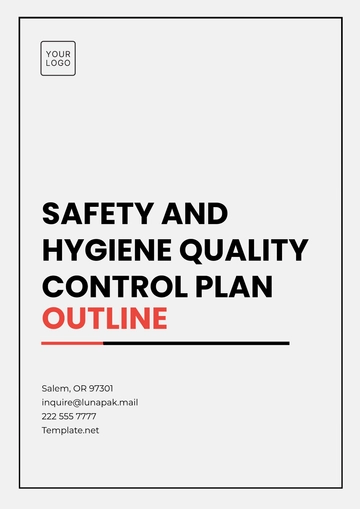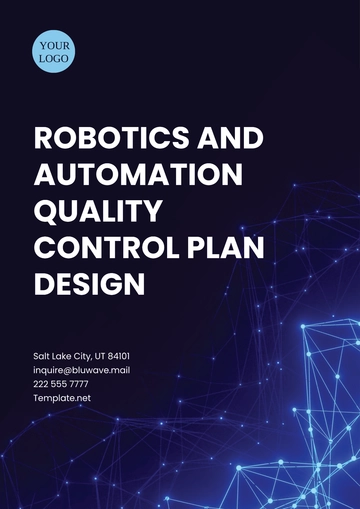Supply Chain and Logistics Quality Control Plan
Introduction
This Quality Control Plan outlines the mechanisms and procedures designed to ensure the efficient, consistent, and reliable operation of supply chain and logistics processes within [Your Company Name]. Adhering to these guidelines minimizes operational disruptions and enhances customer satisfaction.
Objectives
The primary objectives of this Quality Control Plan are:
Ensure timely and accurate delivery of goods: Maintain high levels of customer satisfaction by ensuring that products are delivered on time and as ordered.
Minimize defects and damages in products during transit: Implement rigorous checks and safe handling practices to prevent product damage.
Enhance coordination between different supply chain partners: Facilitate seamless communication and cooperation among all parties involved in the supply chain.
Optimize inventory levels across various points in the supply chain: Use advanced inventory management techniques to maintain optimal stock levels, reducing excess and stockouts.
Roles and Responsibilities
Supply Chain Manager: Oversees all supply chain operations, ensuring quality standards are met and continuously improved. This role involves strategic planning and coordination with all departments.
Quality Assurance Team: Conducts regular audits, inspections, and evaluations of logistics processes and documentation. Responsible for identifying areas of improvement and implementing corrective actions.
Logistics Coordinator: Facilitates effective communication between vendors, suppliers, and internal teams to ensure a seamless workflow. Manages the logistics activities to align with the company's quality and efficiency standards.
Warehouse Staff: Responsible for regular inventory checks, proper storage, and handling of goods to maintain quality standards.
Suppliers: Must adhere to the quality standards set by [Your Company Name] and undergo regular evaluations to ensure compliance.
Quality Control Procedures
Inspection and Testing: Regular inspections and testing of goods are conducted at various points—receipt, storage, and prior to dispatch—to identify and correct any quality issues. This includes checking for damage, proper labeling, and correct quantities.
Auditing: Scheduled and unscheduled audits are performed to maintain compliance with standardized procedures and detect areas needing improvement. Audits cover all aspects of the logistics process, from procurement to delivery.
Supplier Evaluation: Suppliers are evaluated and audited regularly to ensure they maintain the quality standards set by [Your Company Name]. This involves reviewing supplier performance, quality of goods, and adherence to delivery schedules.
Documentation and Reporting
All quality control activities are thoroughly documented to maintain transparency and accountability. Reports are generated and reviewed periodically to assess the effectiveness of the quality control measures. Documentation includes:
Inspection Reports: Detailed records of each inspection, including findings and corrective actions taken.
Audit Reports: Summaries of audit results, highlighting areas of non-compliance and recommendations for improvement.
Supplier Performance Reports: Evaluations of supplier performance based on quality, timeliness, and reliability.
Quality Control Checkpoints
Stage | Activity | Responsible Party |
|---|
Receipt | Inspect incoming goods | Quality Assurance Team |
Storage | Regular inventory checks | Warehouse Staff |
Dispatch | Final product inspection | Logistics Coordinator |
Continuous Improvement
The Quality Control Plan incorporates a continuous improvement approach, leveraging feedback from audits and inspections to continually enhance processes. Training sessions are conducted regularly for staff, ensuring everyone is up-to-date with the latest best practices and quality standards. Continuous improvement activities include:
Training Programs: Regular training sessions for all employees to keep them updated on best practices and quality standards.
Feedback Mechanisms: Collecting feedback from customers and internal stakeholders to identify areas for improvement.
Process Reviews: Regular reviews of supply chain processes to identify inefficiencies and implement improvements.
Conclusion
This Supply Chain and Logistics Quality Control Plan is an essential tool for ensuring that all operations align with [Your Company Name]'s quality standards and customer expectations. Consistent monitoring and updates to this plan are critical for maintaining operational excellence and achieving long-term success.
Plan Templates @ Template.net

























